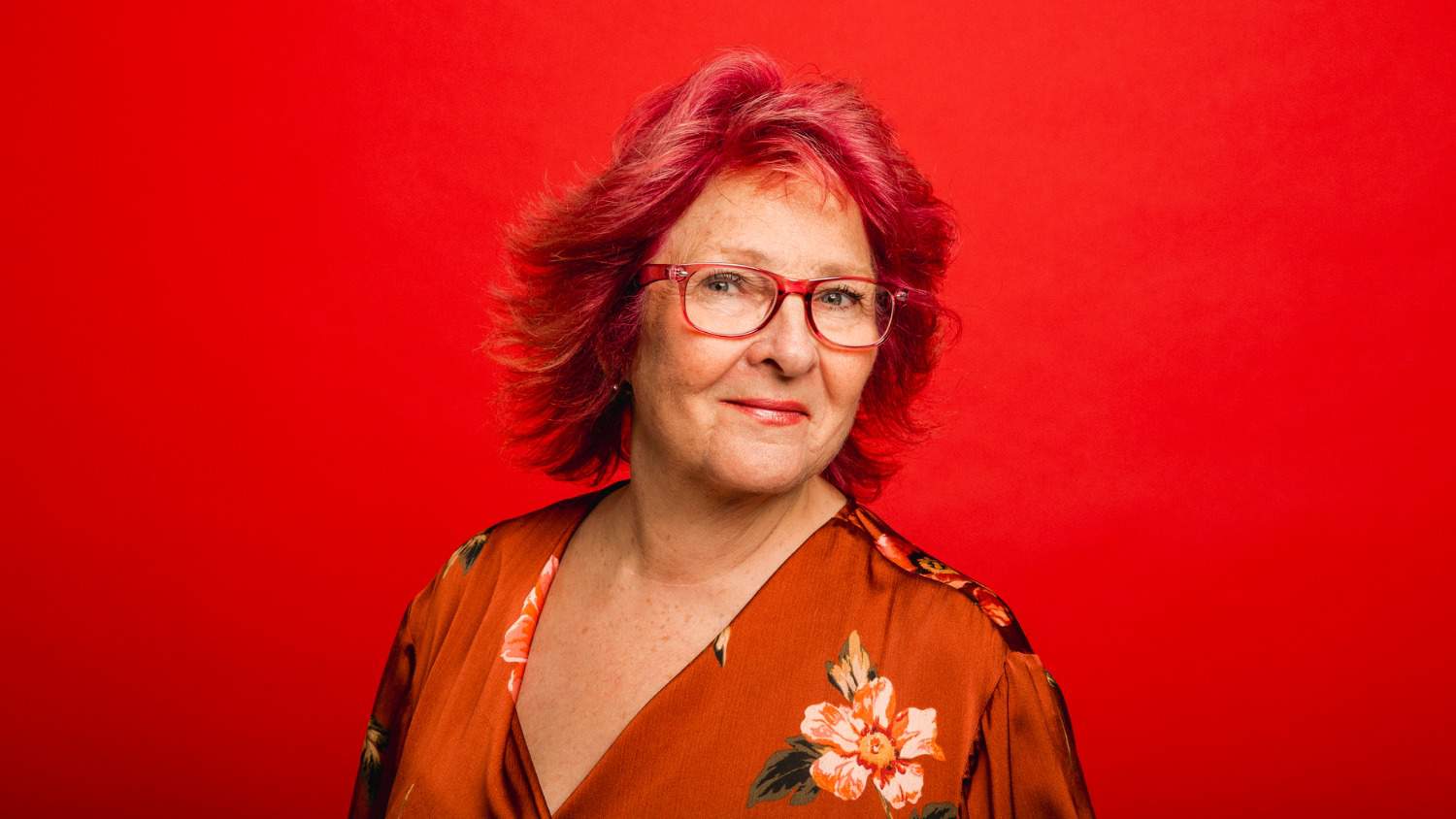
Spectacular Hair Color Options for Fabulous Older Women (Photos)
Should I let my hair go gray? We all face that tough decision sooner or later. We can let nature take control all along, or when gray first appears, we can punt and color our hair “for the time being.”
By age 60, it’s no longer the time being. I find that women our age talk a lot about whether it’s time to stop coloring and find out what we really look like.
We might find out that our hair is a soft and beautiful white. Or it could be a shiny silver. Maybe it’s not even completely gray yet. But it’s likely to just be either dull or white.
Thinking of going grey? This article explains what to really expect.
A Brighter Gray
Since I write for the hair industry, I asked for guidance from a couple of hairdressers who love their clientele in this age range.
Frank Shortino, a Wella artist and owner of Shortino Salon and Spa in York, Pennsylvania, says his “gray reduction” is a popular color service for women who want to cover up the years without exactly covering the gray. This is much less time-consuming and costly than keeping up with full gray coverage.
“I just put a little gold into the hair,” Frank tells me. He says the warm tones light up not only the hair but also the face. “It’s like putting a pinch of salt into your food,” he explains. “This is just a pinch of color in the hair.”
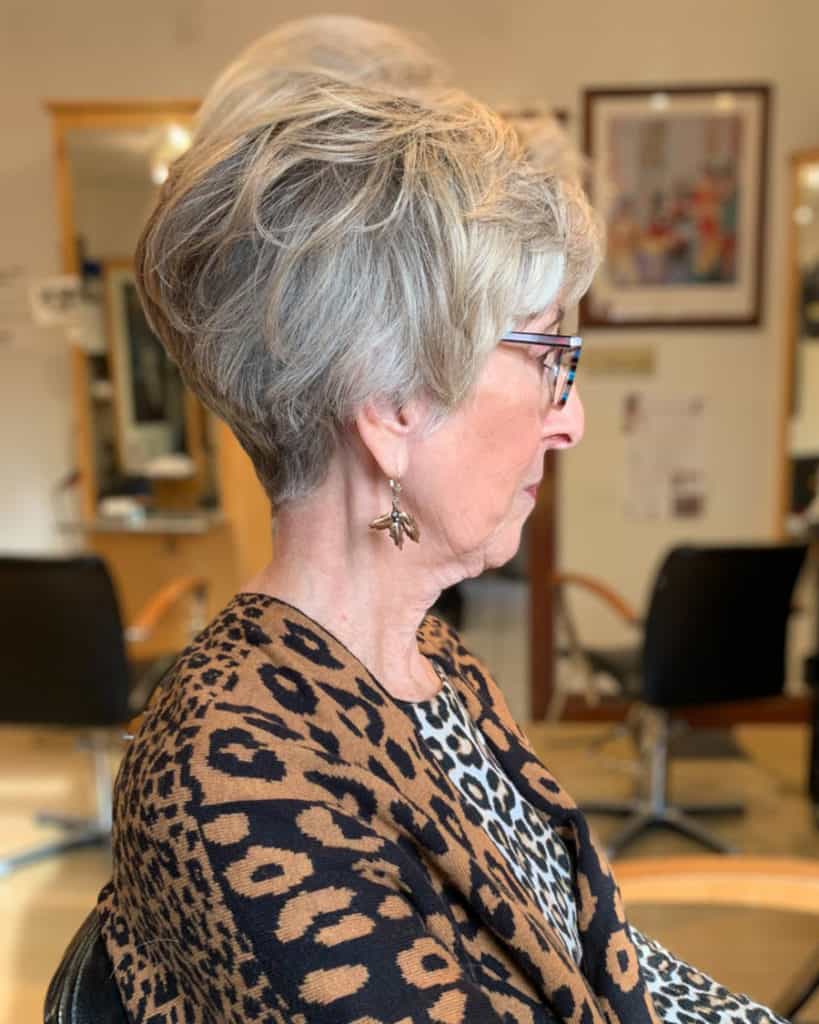
Recapture Your Rich Color
Despite any vision of plucking out gray one strand at a time, going gray typically begins as a gradual loss of vibrance. If you’re a brunette, for example, one day you might look in the mirror and realize that the brown is more taupe.
Youth’s vivid color fades, which you notice if you have long hair because you can contrast the top with the ends that grew out of your head perhaps years earlier. With short hair, you may not pick up on this evolution.
Often, highlights are the first solution for women who just want their hair to look the same as it used to look. Highlights add brightness and disguise what’s going on up there.
But highlights do not restore brilliance. As the fading deepens, the next step tends to be single-process color. You choose a shade that’s as close as you can get to the color your hair was before it began losing its luster. Photos from your earlier adulthood can help with this.
Once you get used to a maintenance schedule for single-process color, your stylist may circle back to highlights – not instead of the color but on top of it to give your hair dimension and get closer to natural-looking hair color, which is never exactly the same color.
In the photos of Frank Shortino’s client shown below, the difference from “before” to “after” is the vibrance. The shade is similar but bolder and more youthful, aided by golden highlights. The cut further helps by bringing out the wave, which builds additional dimension and movement.
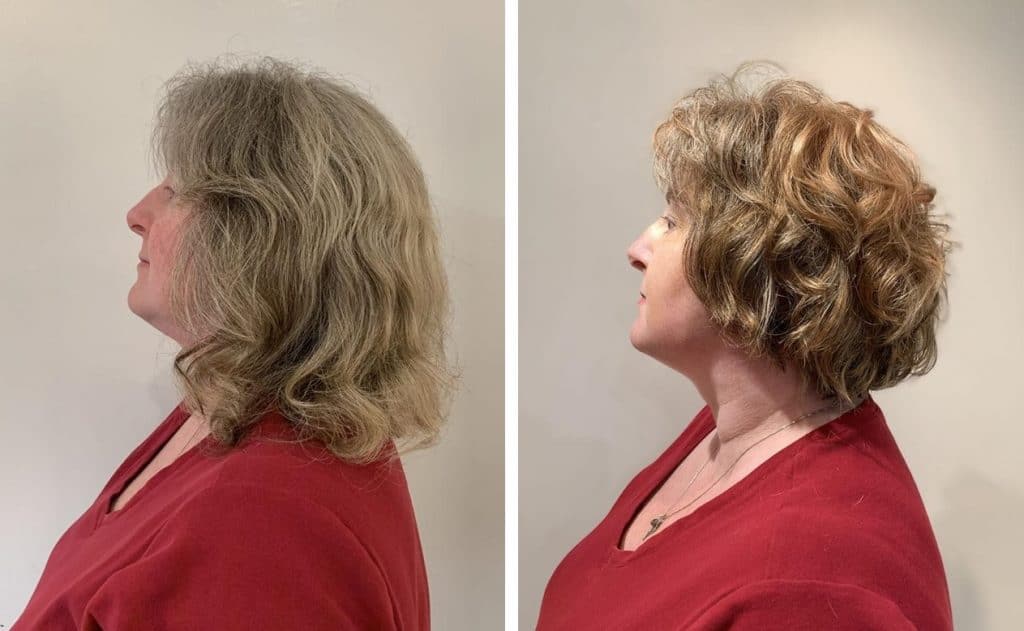
Similar to Frank’s client is the chestnut look below designed by Maria Mello, owner of Hair Ninja Salon in Brandenton, Florida. Caramel strokes like these are a popular addition to many shades, acting as lowlights for blondes and highlights for brunettes and reds.

For Maria’s client with longer blonde hair, a soft rose color defines the accents. Highlights in rose, violet or blue are opening up more choices for women of all ages.
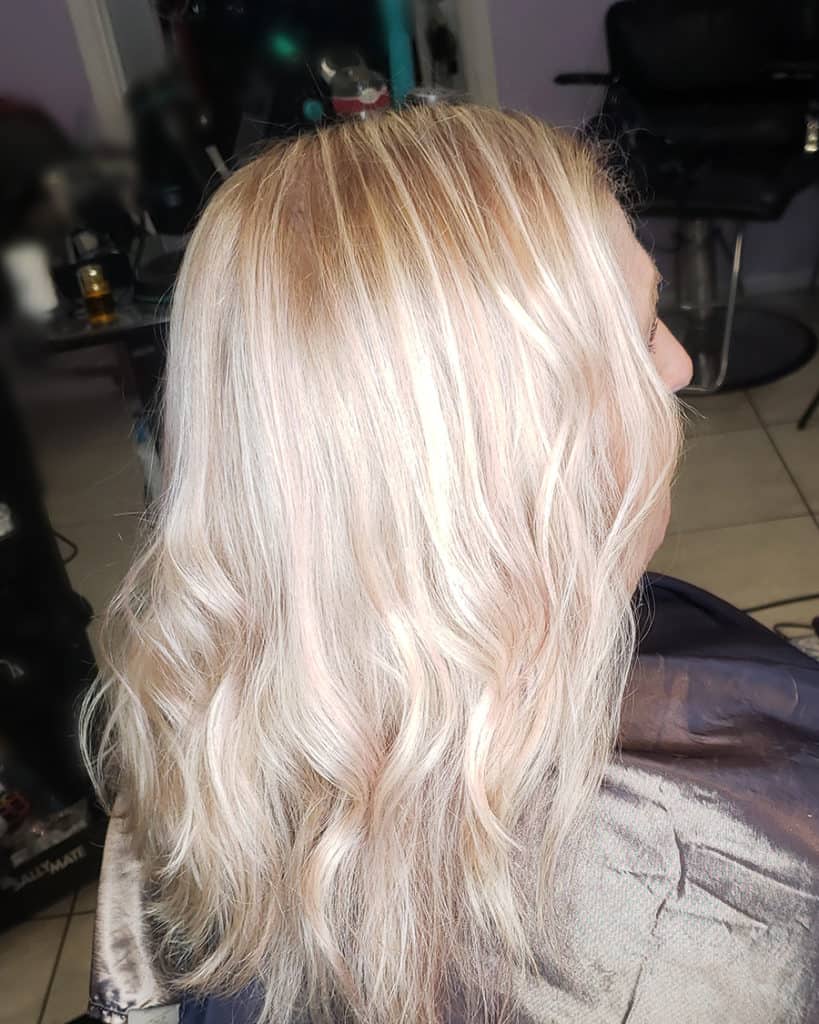
Ready for Fashion Color Extravaganza?
Some of Maria’s clients really want to stand out, so she fills that request by going full-speed with fashion color. Maria says she’s become known in her area for these dramatic cherry, purple, magenta, and rainbow looks.
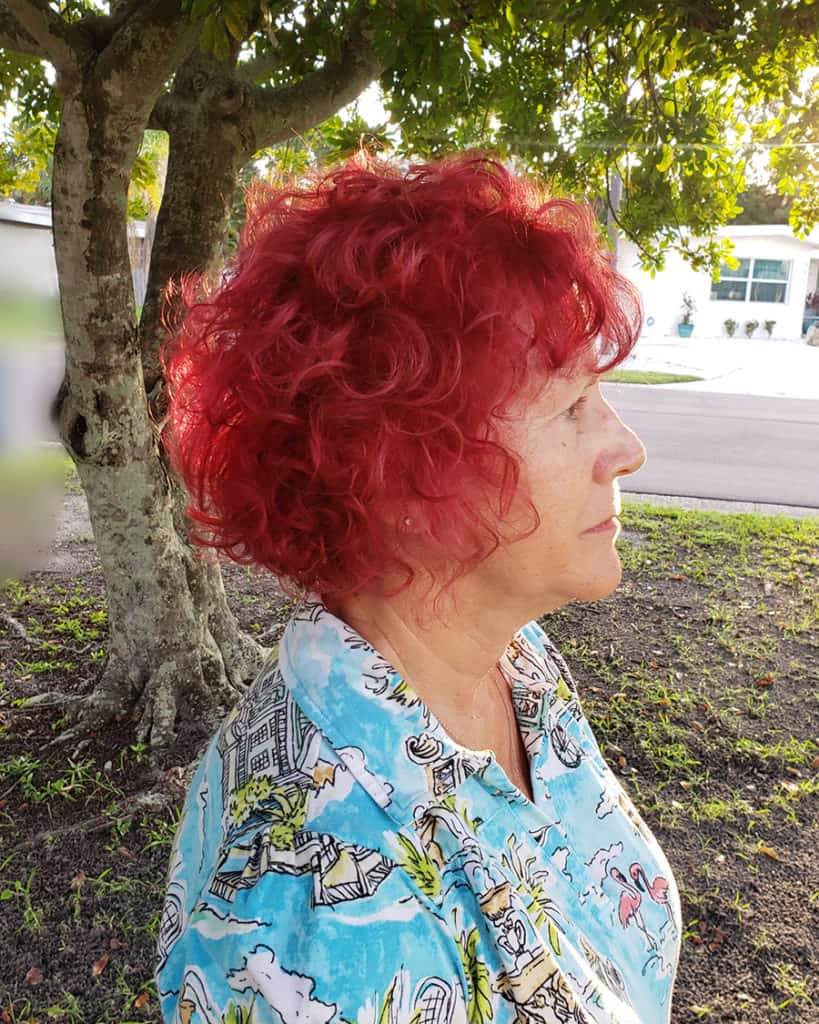

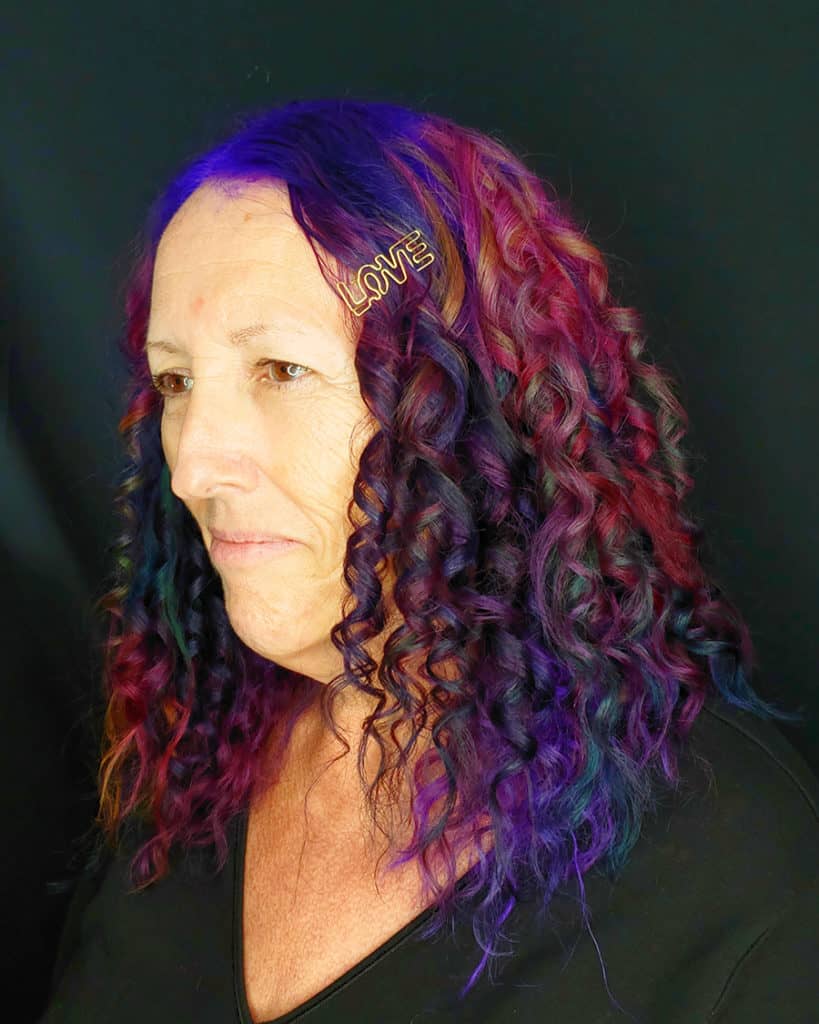
“I always joke that it’s a great transformation and cheaper than a sports car or plastic surgery,” Maria says. “I admire these women so much. One told me that she’s done everything to please other people her whole life, and now it was time to do something that makes her happy.”
Hair makeovers have Maria smiling, too.
“I love my job and especially this clientele, because I get to see a woman’s face light up when we’re finished,” Maria says. “She finally sees what I saw when she walked in the door – that she’s beautiful.”
Want some hairstyle inspirations? Read our article that covers over 60 hairstyles for older women.
Let’s Have a Conversation:
What color did your hair turn with age? What are you doing about it? What hair color do you enjoy most? Please share with our community!
Photo credits: Images courtesy of Shortino Salon and Spa and Hair Ninja Salon.






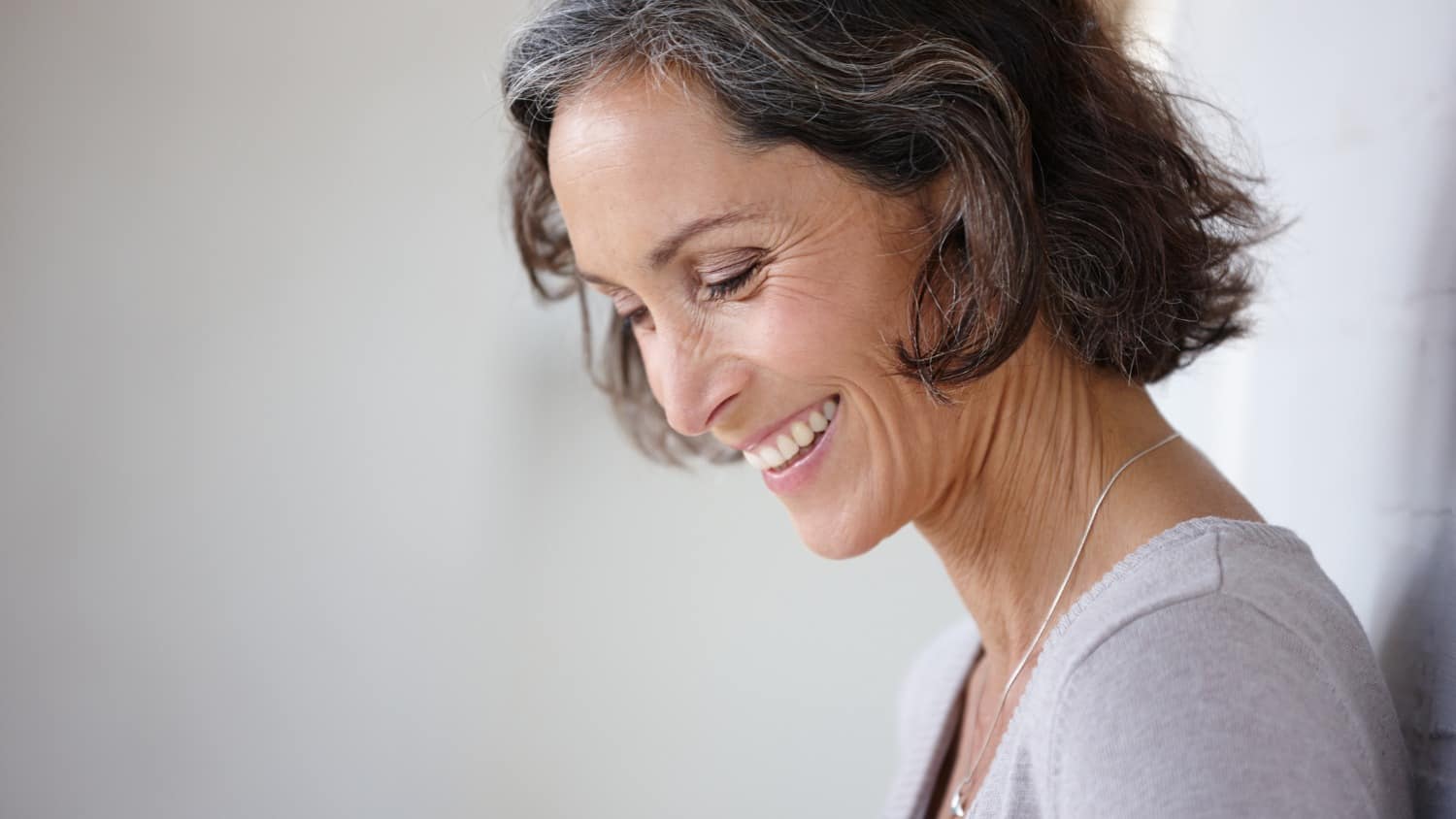
I don’t want to start an uncomfortable conversation, but not everyone who reads your blog is Caucasian and not all have Caucasian-like hair. By showing only Caucasian women, how are women of other ethnicities and hair types to get an idea of what will work in their hair? And mind you, not every hair product works well in every hair type. Please be considerate of your ENTIRE audience in future posts. Thank you
Thank you for commenting, Karen. Please note that this article is based on hairdressers’ expertise and the photos used by the author are provided by same hairdressers, as noted in the credits. The advice is not mentioned to be related to any ethnicity, so assuming it is would be incorrect. Vibrant hair colors can and are used by fabulous women of all ethnic groups, and we should celebrate that!
Cheers!
Karen, thank you for your comment. It’s important. This article is based on one stylist’s clientele, but I will tell you that in the salon community there is now a lot of advocacy for broadening education in textured hair. Many states have not yet made texture hair proficiency a requirement for cosmetology licensure, and that is being challenged. I’ll see what I can do about putting together an article that addresses color for women 60 and older who have coarse, curly and other types of textured hair.